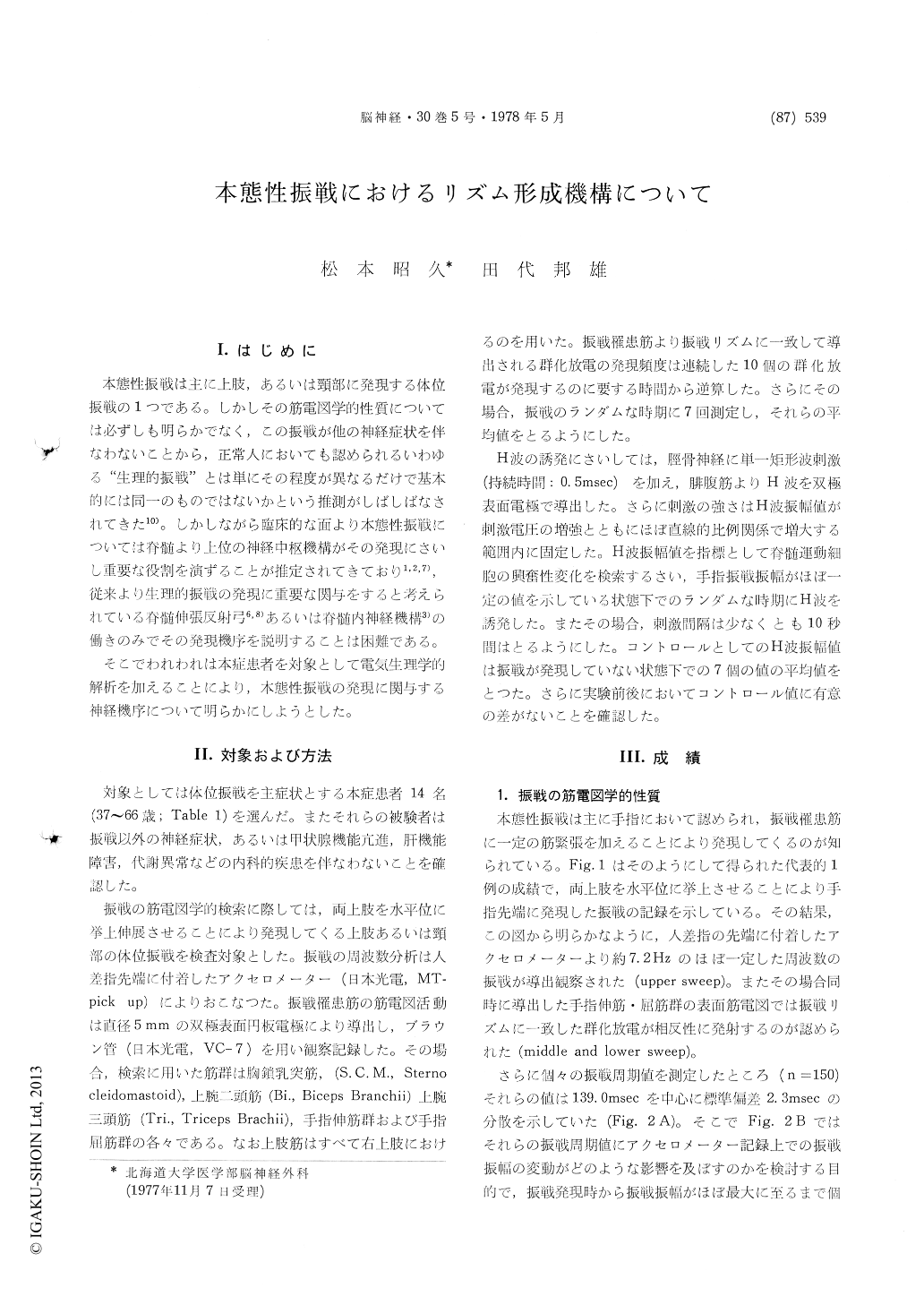Japanese
English
- 有料閲覧
- Abstract 文献概要
- 1ページ目 Look Inside
I.はじめに
本態性振戦は主に上肢,あるいは頸部に発現する体位振戦の1つである。しかしその筋電図学的性質については必ずしも明らかでなく,この振戦が他の神経症状を伴なわないことから,正常人においても認められるいわゆる"生理的振戦"とは単にその程度が異なるだけで基本的には同一のものではないかという推測がしばしばなされてきた10)。しかしながら臨床的な面より本態性振戦については脊髄より上位の神経中枢機構がその発現にさいし重要な役割を演ずることが推定されてきており1,2,7),従来より生理的振戦の発現に重要な関与をすると考えられている脊髄伸張反射弓6,8)あるいは脊髄内神経機構3)の働きのみでその発現機序を説明することは困難である。
そこでわれわれは本症患者を対象として電気生理学的解析を加えることにより,本態性振戦の発現に関与する神経機序について明らかにしようとした。
Essential tremor is one of the very common movement disorders. As to the neural system re-sponsible for this tremor, several hypotheses have been suggested. But the details of that system have been obscured. To solve this problem, we electrophysiologically studied the neural mechanism of the essential tremor in 14 patients ranging in age from about 37 to 66 yr.
In the experiments, the tremor was elicited from the hands and neck by outstretching the upper extremities. The finger tremor was recorded with the miniature accelerometer (Nihon-koden, MT-pick up) affixed to the index finger. EMGs were recorded with skin electrodes (bipolar ones) affixed over the muscles of finger extensor, finger flexor, biceps brachii, triceps brachii and sternocleido-mastoid of both sides.
As the results, the tremor frequencies ranged mainly from 6 to 9 per second in these patients.The simultaneously recorded EMGs exhibited the rhythmical burstings at the same frequency to that of the tremor. Furthermore, the EMG burstings discharged reciprocally between finger extensor and flexor in 9 cases, but in 3 cases they discharged simultaneously between both muscles. Such a result may suggest that the alternating contraction of antagonistic muscle groups does not play an im-portant role for the production of tremor.
The frequencies of EMG burstings were quite the same among different muscles in the same person, regardless of the reflex arc lengths in the stretch reflex. From these results, it was considered that the bursting frequencies of the individual muscles were generated by the common central mechanism responsible for the tremor production, rather than generated by oscillation in the stretch-reflex loop of individual muscles.
In order to make a further investigation into the common neural mechanism above described, the descending effects of such neural system on the excitability change of individual spinal moto-neurones were studied in 7 cases. For this, the amplitude changes of H-waves elicited from M. gastrocnemius were examined at various stages of the finger tremor. In the typical case, the ampli-tudes of H-waves gradually changed from 90% of the control value to 140% with the similar time course to that of the finger tremor recorded with the accelerometer. The similar results were also obtained in another 3 cases. These results suggest that the central neural system above described rhythmically exerts the facilitatory and depressive effects on the excitability change of individual spinal motoneurones, and that such a neural system may play an important role for the production of essential tremor.

Copyright © 1978, Igaku-Shoin Ltd. All rights reserved.


